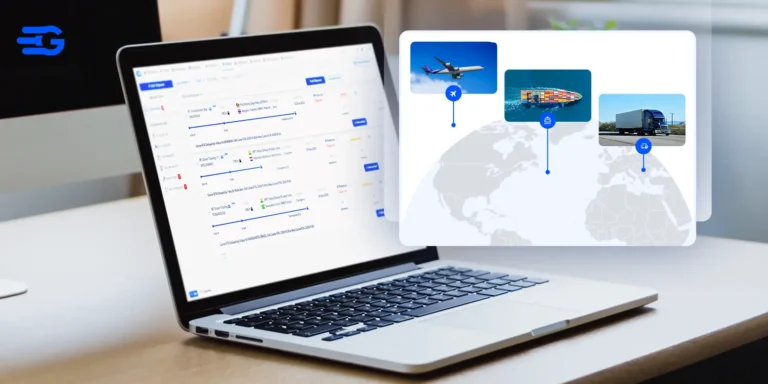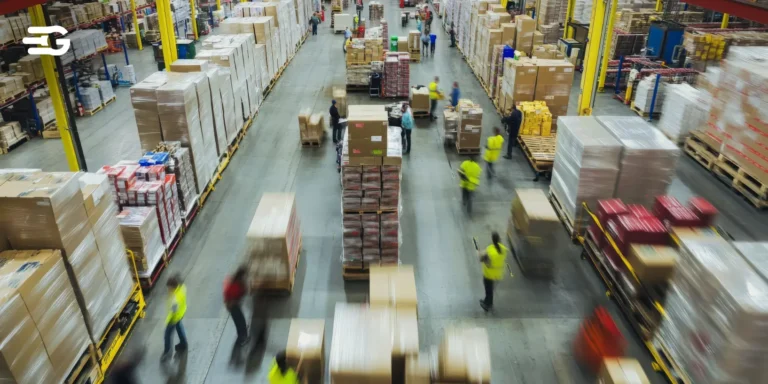The Logistics Trends You Can’t Ignore in 2025: Expert Opinions
In 2025, the logistics landscape is in the midst of a transformative phase. As global supply chains evolve rapidly, industry experts are weighing in on the trends that are reshaping the way goods are moved, stored, and delivered. Drawing on the insights of thought leaders from across the logistics spectrum, let’s explore the key trends to watch and practical advice for companies seeking to stay ahead in an ever-changing environment.
Digital Transformation and Data-Driven Decision Making
The digital revolution is not coming, it’s here. Experts have emphasized that data is the new currency in logistics. Companies are harnessing real-time data from sensors, IoT devices, and digital platforms to make smarter, faster decisions. Instead of reacting to problems after they occur, businesses are now predicting issues before they escalate.
For instance, leveraging machine learning algorithms to forecast demand allows companies to manage inventory more efficiently. Platforms like GoComet are at the forefront of this evolution, seamlessly integrating disparate data sources and delivering real-time analytics to optimize routes, reduce fuel consumption, and cut transit times. GoComet’s AI-powered Predictive ETA feature enhances shipment tracking by providing accurate estimated arrival times, ensuring businesses can plan ahead and minimize disruptions. This proactive approach isn’t just about cost savings; it’s about building resilience into the supply chain.
In an increasingly connected world, every link in the supply chain—from manufacturing to last-mile delivery—is being monitored and optimized. The result is a network that is agile, efficient, and capable of adapting to rapid market changes. As companies continue to invest in digital infrastructure, the logistics industry will become more transparent and responsive, offering a competitive edge in a crowded marketplace.
The Growing Role of Automation and Robotics
Mike Bhaskaran, a seasoned expert in global logistics and COO at DP World, points out that robotics and automation are no longer futuristic concepts. They are, in fact, everyday realities. In warehouses, robotic systems handle tasks such as picking, packing, and sorting, dramatically increasing speed and accuracy.
Automated Guided Vehicles (AGVs) and drones are streamlining processes in large distribution centers, ensuring that inventory is managed with minimal human intervention. This shift not only improves operational efficiency but also significantly reduces the likelihood of human error. The deployment of self-driving trucks is also gaining traction, signaling a potential revolution in long-haul freight.
The movement towards automation is a response to both rising labor costs and the demand for faster delivery times. Companies are rethinking their operational models to integrate automated systems that work around the clock. The resulting increase in productivity is enabling businesses to meet the heightened expectations of today’s consumers while maintaining optimal standards of accuracy and efficiency.
Embracing Sustainability in Logistics
Sustainability has emerged as a fundamental pillar of modern logistics according to Viral Patel, a senior logistics analyst at East West Hauling Inc. With mounting regulatory pressures and a growing consumer preference for environmentally responsible companies, sustainability is now a key differentiator in the market.
Companies are shifting towards greener practices by investing in renewable energy, optimizing transportation routes to reduce emissions, and transitioning their fleets to electric or hybrid models. Businesses are also rethinking packaging, moving towards materials that are recyclable or biodegradable, and embracing circular economy principles to reduce waste.
To support these sustainability initiatives, GoComet’s CO2 Tracker provides companies with real-time insights into their carbon footprint, enabling them to make data-driven decisions to minimize emissions. By using analytics to assess the environmental impact of their shipments, businesses can actively work towards greener supply chain operations while ensuring compliance with evolving regulations.
These sustainable initiatives are not merely about compliance; they are strategic moves that enhance brand reputation and build customer loyalty. In a world where environmental concerns are at the forefront, a commitment to green logistics can provide a substantial competitive advantage. By reducing their carbon footprint, companies are not only contributing to a healthier planet but also setting new standards in efficiency and innovation.
Advanced Supply Chain Visibility
Transparency is key to building trust in today’s complex supply chains. Oleksandr Khudoteplyi, Co-Founder and COO of AdvantISS, has been vocal about the importance of advanced visibility technologies in logistics. By integrating blockchain and IoT, companies can now track every movement of their products in real time.
This level of transparency is particularly critical for sectors like pharmaceuticals and food, where the quality and integrity of goods are paramount. With real-time monitoring, businesses can quickly identify bottlenecks or disruptions and address them before they escalate into major issues. GoComet’s automated container tracking software provides end-to-end visibility, allowing companies to monitor shipments with real-time data and automated notifications.
The enhanced tracking capabilities provide all stakeholders with accurate and timely information. This shared visibility fosters collaboration and drives more efficient decision-making across the supply chain.
Navigating Geopolitical and Economic Shifts
No discussion about logistics in 2025 would be complete without acknowledging the influence of global geopolitical and economic factors. Dr. Vikash Khatri, a seasoned logistics and supply chain expert, has highlighted the need for resilient supply chains in the face of unpredictable external shocks. Trade disputes, fluctuating fuel prices, and regional tensions all have a direct impact on logistics costs and operational stability.
To navigate these uncertainties, businesses need access to real-time intelligence. GoComet’s Incidents Dashboard provides supply chain professionals with critical updates on geopolitical events, port strikes, natural disasters, and other disruptions that could impact global logistics. By leveraging this tool, companies can proactively reroute shipments, avoid high-risk areas, and make informed decisions in response to emerging threats.
Enterprises are now diversifying their supplier bases and exploring strategies like nearshoring and reshoring to mitigate these risks. By reducing dependency on long, complex supply chains, companies can better control costs and minimize disruptions. The key is to remain agile and responsive, ready to adapt to sudden changes in the global economic landscape.
The Convergence of E-Commerce and Logistics
The rapid growth of e-commerce has had a profound impact on logistics. Ashok Viswanathan, a respected voice in supply chain management, observes that the rise of online shopping has set new expectations for delivery speed and reliability. Consumers now demand rapid, often same-day delivery, placing immense pressure on traditional logistics models.
To meet these demands, companies are investing in micro-fulfillment centers that are strategically located in urban areas. These small, highly automated warehouses enable faster processing and delivery of orders, ensuring that customers receive their purchases without delay. The convergence of e-commerce and logistics has also given rise to innovative delivery solutions such as crowd-sourced logistics and on-demand delivery services.
These insights underscore that 2025 is a pivotal year for logistics. Digital transformation, automation, sustainability, transparency, and customization are the building blocks for a resilient and efficient future. Companies that invest in technology, upskill their workforce, and adopt customer-centric strategies will not only survive—they’ll thrive. GoComet continues to be a key enabler of this transformation, offering AI-driven solutions that enhance efficiency, visibility, and cost optimization across supply chains. The time to innovate, adapt, and lead the change is now. The future of logistics is here, and it’s too powerful to ignore.






